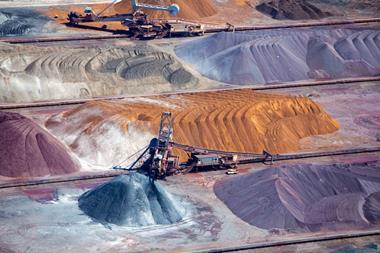Exchange traded funds (ETFs) have achieved great popularity since their launch in the late 1990s and now are available to cater to every investment niche. But in contrast to the proliferation of mutual funds following a vast array of SRI policies, it is only very recently that socially responsible investment has been represented by ETFs.
The first two socially responsible ETFs launched in the US only at the beginning of 2005. They span the range of approaches investors concerned with taking a socially responsible stance can take. And in the less than two years since their launch, they have both proved popular enough to spawn sister funds in their groups.
One ETF, the KLD Social Select Index Fund is based on the index of the same name, provided by Boston-based KLD Research and Analytics. It is offered by iShares, the ETF arm of BGI, one of the overall leaders in ETF provision.
The KLD Social Select Index is designed to maximize exposure to social and environmental factors while mirroring risk and return characteristics similar to the Russell 1000 Index. The index is highly rules based and the only negative screening it deploys is the avoidance of tobacco companies.
According to Tom McCutchon, this ETF can appeal to institutional investors. "It is a solution that increases the overall social responsibility exposure within an established benchmark," he explains. It offers exposure to a socially responsible investment policy but in a risk-controlled manner.
This index is sector-diversified. KLD evaluates the social and environmental performance of companies by analysing such factors are community relations, diversity, employee relations, human rights, corporate governance, environment, and product quality and safety, assigning ratings for each of the criteria. These are integrated into overall company scores, which are used to determine index holdings and weights. The index maintains tracking error to less than 200 basis points relative to the Russell 1000.
McCutchon points out that the companies within the index fall into the 96th percentile overall in terms of their company scores for social and environmental performance. The index is rebalanced quarterly, when index weights can be adjusted, but additions and removals take place only annually.
The top 10 holdings include the American Express Company, Johnson & Johnson, and IBM - mainstream corporations offering strong performance that also meet KLD's criteria.
The ETF based on this index has provided good returns for its shareholders. Year to date, it has yielded 6.86%; for the year ending December 31, 2005, it offered 9.61%. Its P/E ratio is 17.99%, and it has a relatively low expense ratio, at 0.50%.
iShares launched this fund on the basis of client interest - and continued client interest is leading to a second ETF. A registration statement was filed with the SEC in September this year for an ETF tied to KLD's Domini 400 Social Index. Unlike the Select, the Domini uses multiple social screens for alcohol, tobacco, firearms, gambling, nuclear power, and military weapons. KLD additionally imposes financial screens for market cap, earnings, liquidity, stock price, and debt to equity ratio. Its core universe is the S&P 500, and the index aims to include approximately 250 S&P 500 companies at any given time, in addition to 100 non-S&P companies for diversification, and an additional 50 chosen for their social and environmental records.
"We follow a building-block approach" to creating product offerings, said McCutchon, adding on new products whenever a gap is identified, By offering both a rules-based fund and a more qualitative, screening-based ETF, iShares is rounding out its product offerings, he explains.
PowerShares, another big name in ETFs, has taken a different kind of approach to its socially responsible ETF. The Powershares WilderHill Clean Energy Portfolio reflects the WilderHill Clean Energy Index.
As its name suggests, this index tracks the clean energy sector. "We've made carbon - preventing pollution - the organising principle," says Robert Wilder, the index's founder. "It's very correct and honest, but also genuinely innovative."
Stocks and sector weightings are based on the significance for clean energy, technological influence, and pollution prevention. Quarterly rebalancings are based on qualitative analysis, with criteria including technological significance, relevance to clean energy, climate change, and pollution prevention, biodiversity preservation, and other non-financial criteria. Index sectors, similarly, are weighted according to the same non-financial criteria.
Wilder considers his work to be "second-generation SRI," in that it is based only on positive screening and in a very focused area.
"I designed the index almost as a public service, to show clean energy as a real sector," Wilder explained. As the index circulated, he received enquiries about whether it could serve as the foundation for a fund. Wilder approached a variety of SRI fund providers, but none were interested. In the end, it was PowerShares that approached him.
PowerShares had identified a need for an investment vehicle in this area, explains Bruce Bond, president and CEO of PowerShares Capital Management. He believes that clean energy has great legs from an investment standpoint - if the past year's high oil prices taught anything, it was that investment in the development of clean energy technologies will have to increase. "This will be a growing concern for years to come," he maintains.
For institutional investors seeking to increase their allocations to socially responsible investments, Bond believes that the clarity and transparency of this ETF is a benefit. "SRI is one area that product providers have had a difficult time convincing institutional clients. There is a wide range of opinions regarding what SRI really is. But we have gotten a product out there that is clear," he said. "Everyone knows that it's a good thing to protect the environment."
The construction of the underlying index of the ETF will give a diversified exposure to the clean energy area - not "brown" energy, as in cleaner coal, but genuinely "green" energy.
Since its inception in 2005, the ETF has taken $596m in assets under management, despite the volatility of its returns. Since inception, the fund has generated returns of 5.04% - this is depite a loss in its first year of 4.59%. Top holdings in October this year include the OM Group, Energy Conversion Devises, and Medis Technologies. Its expense ratio is 0.60%.
Like iShares, PowerShares is encouraged by its success and is hoping to broaden its product offerings in the area. At the moment, although no product has been launched, Bond is looking at possibilities with the WilderHill New Energy Index. This is comprised of companies worldwide whose innovative technologies and services focus on the generation and use of cleaner energy. The index was formulated by Wilder because so much activity regarding clean energy is taking place outside of the US. Wilder is also looking at the possibility of licensing a European product based on this index.












No comments yet